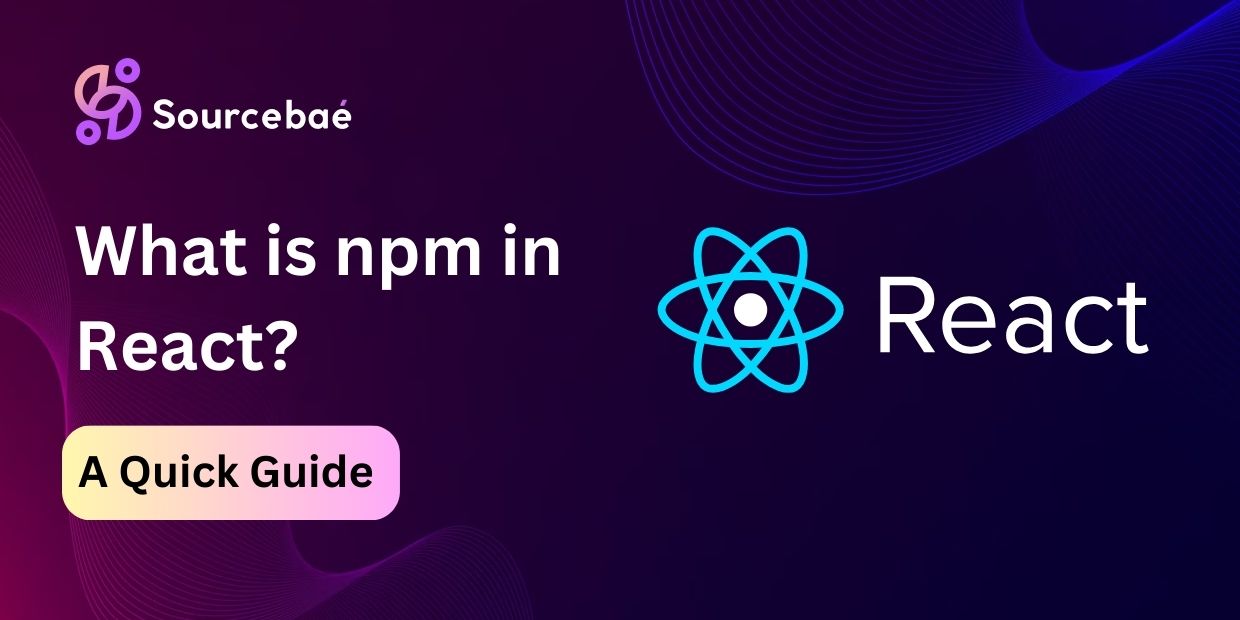This comprehensive guide will walk you through the ins and outs of npm in React, shedding light on its significance and practical implementation.
Whether you’re a novice or a seasoned developer, this article will equip you with the knowledge needed to harness the full potential of npm in your React applications.
What is npm in React?
npm, short for Node Package Manager, is a package manager for JavaScript. It is an essential tool in the React ecosystem that simplifies the process of installing, updating, and managing third-party libraries and packages.
By providing a centralized repository of reusable code, npm enables developers to leverage existing solutions, boost productivity, and maintain code quality.
In the context of React, npm plays a pivotal role in managing dependencies, scripts, and other project-related configurations.
It allows developers to focus on building innovative user interfaces and functionalities by seamlessly integrating external resources without the hassle of manual management.
The Role of npm in React Development
Streamlining Dependency Management
One of npm’s primary roles in React development is managing dependencies. Dependencies are external packages or libraries that your React project relies on. npm simplifies the process of declaring, installing, and updating these dependencies, ensuring that your project stays up-to-date and functions smoothly.
Efficient Package Installation
npm provides a straightforward method for installing packages required for your React project. With a simple command, such as npm install package-name, you can effortlessly integrate external functionality into your application. This eliminates the need for manual downloading and copying of files, saving valuable development time.
Enabling Script Execution
npm enables you to define and execute custom scripts within your React project. These scripts can perform various tasks, such as starting the development server, running tests, and building production-ready assets. This flexibility empowers developers to automate routine processes and maintain consistent workflows.
Version Control and Updates
Keeping your React project current is essential for security and performance reasons. npm allows you to manage package versions effectively. By specifying version ranges in the package.json file, you can ensure that your project utilizes compatible and up-to-date packages.
Collaboration and Code Sharing
npm facilitates collaboration among developers by providing a centralized repository for sharing code. You can publish your packages to npm, making them accessible to the global development community. This encourages knowledge exchange, accelerates project development, and fosters innovation.
How to Use npm in React Projects
Initializing a New Project
To start a new React project using npm, open your terminal and navigate to the desired directory. Run the following commands:
npx create-react-app my-app
cd my-appThis will create a new React application named “my-app” and navigate you into its directory.
Installing Dependencies
Once your project is set up, you can begin installing dependencies. Use the npm install command followed by the package name to integrate third-party libraries. For instance:
npm install axiosThis installs the Axios library, commonly used for making HTTP requests in React applications.
Running Scripts
npm scripts enhance your development process. To start your React development server, simply execute:
npm startThis command launches the development server, allowing you to preview your application in your web browser.
Updating Packages
Regularly updating packages is essential to keep your React project secure and efficient. To update all packages to their latest versions, run:
npm updatePublishing Your Package
If you’ve built a reusable component or utility, you can publish it to npm for others to use. First, create an account on the npm website. Then, in your project directory, run:
npm login
npm publishYour package will be accessible to developers worldwide.
FAQs About npm in React
How does npm differ from Yarn?
npm and Yarn are both package managers for JavaScript, but they have different approaches to dependency resolution and performance. npm is the default package manager for Node.js and is widely used in the JavaScript community. Yarn, developed by Facebook, was designed to address some of the limitations of npm, particularly related to speed and reliability.
Can I use npm in non-react projects?
Absolutely. While npm is commonly associated with React development, it is a versatile tool that can be used in various JavaScript projects. Its ability to manage dependencies and execute scripts makes it valuable in any development environment.
What is a “package.json” file?
The “package.json” file is a central configuration file in a Node.js project. It lists project metadata, dependencies, and scripts. This file is essential for defining project details and ensuring consistent development workflows.
How do I handle version conflicts?
Version conflicts can arise when different packages require incompatible versions of a shared dependency. npm addresses this through semantic versioning (SemVer). By specifying version ranges, you can control which versions of packages are used and prevent conflicts.
Can I use npm to manage CSS frameworks in React?
Yes, you can use npm to install and manage CSS frameworks like Bootstrap or Material-UI in React projects. These frameworks provide pre-designed components and styles that can enhance the look and feel of your application.
How often should I update packages?
Regularly updating packages is recommended to ensure that your project benefits from bug fixes, security patches, and performance improvements. However, before updating, it’s crucial to test the new versions in a controlled environment to avoid potential disruptions.
Conclusion
In the dynamic landscape of React development, npm stands as an indispensable tool for managing dependencies, enhancing efficiency, and fostering collaboration.
By simplifying package installation, enabling script execution, and facilitating code sharing, npm empowers developers to create robust and innovative React applications.
As you embark on your React journey, mastering npm will undoubtedly contribute to your success as a skilled and proficient developer.






